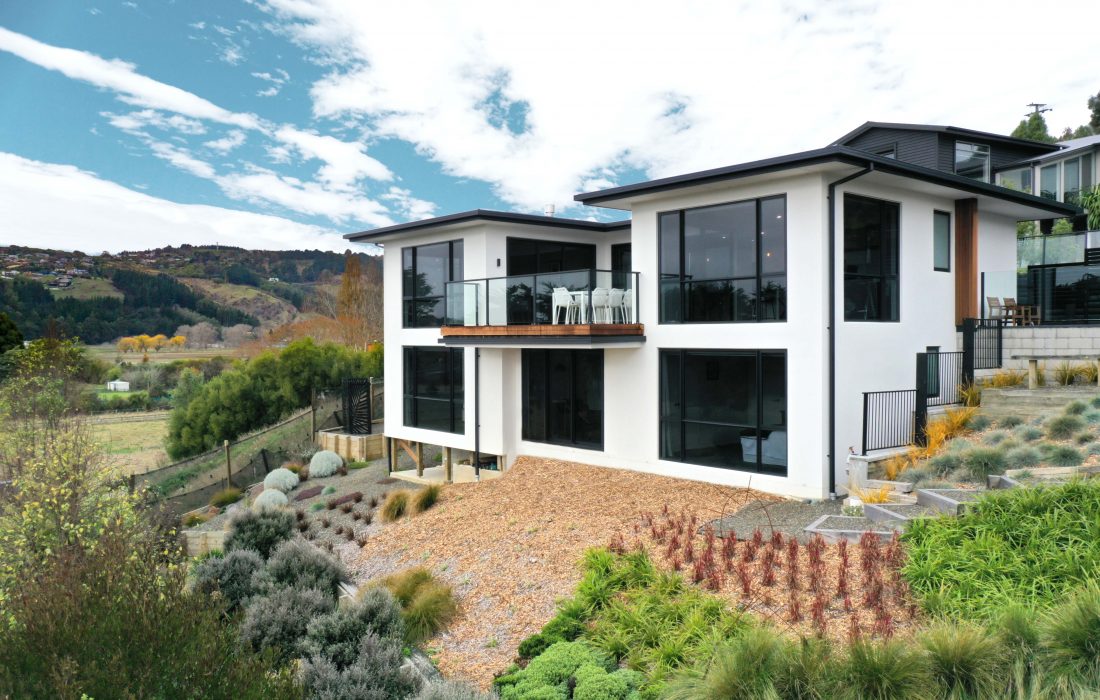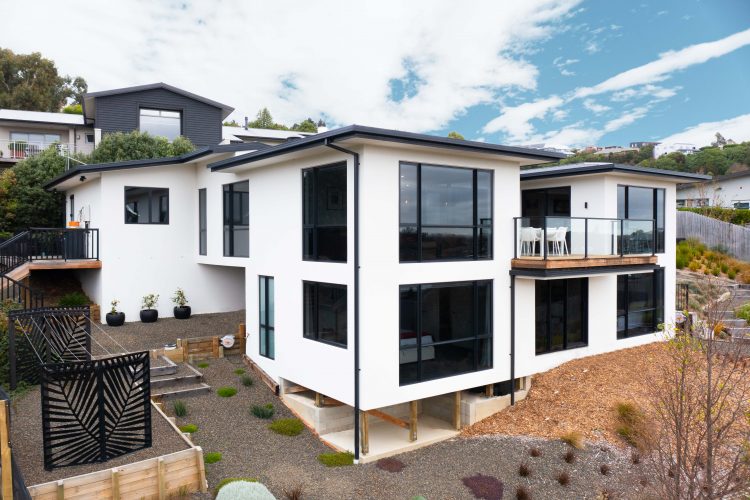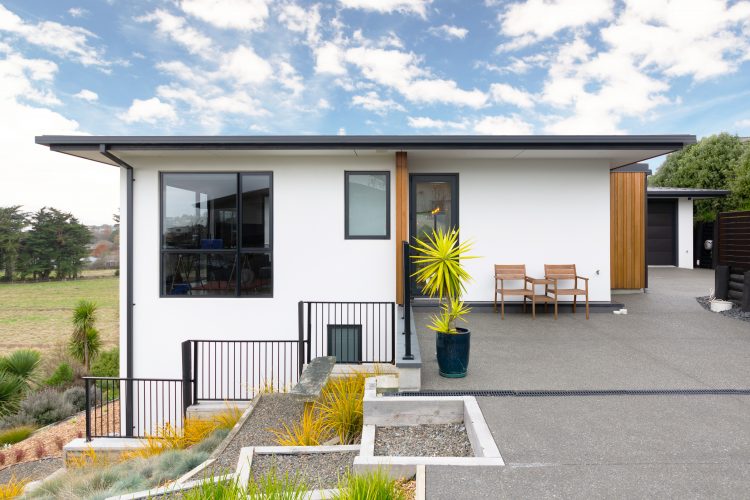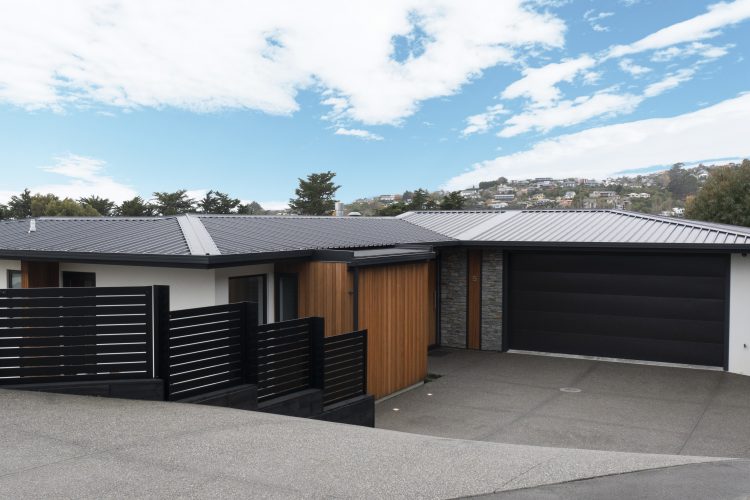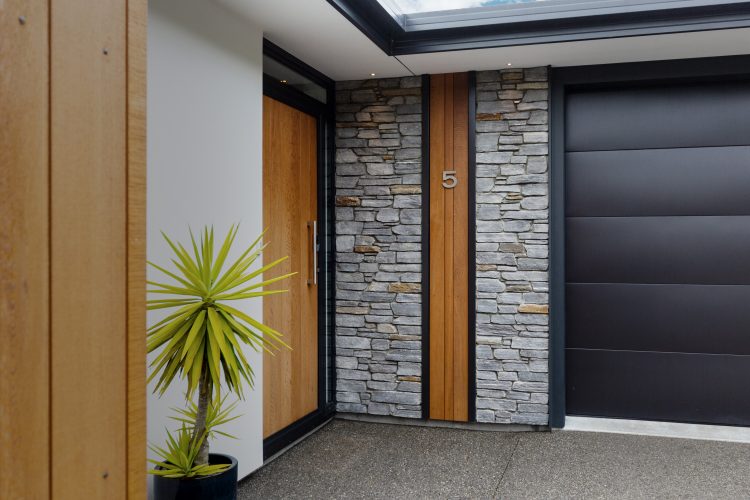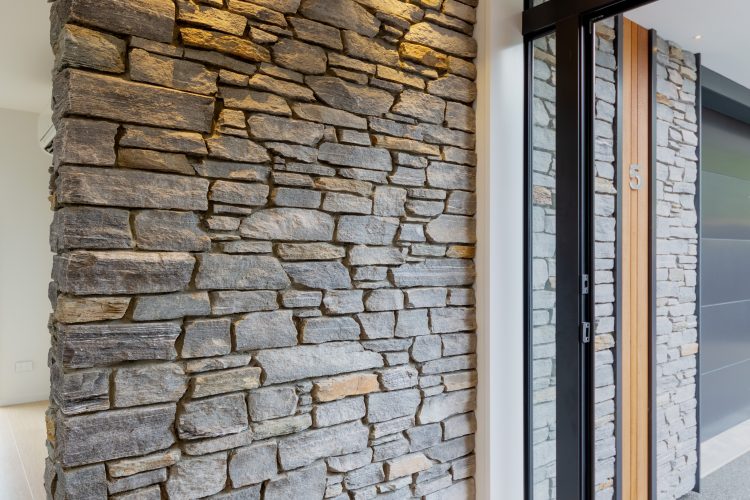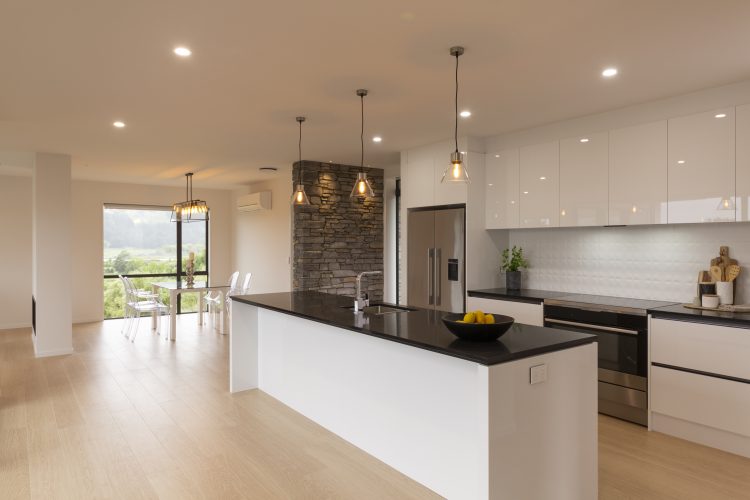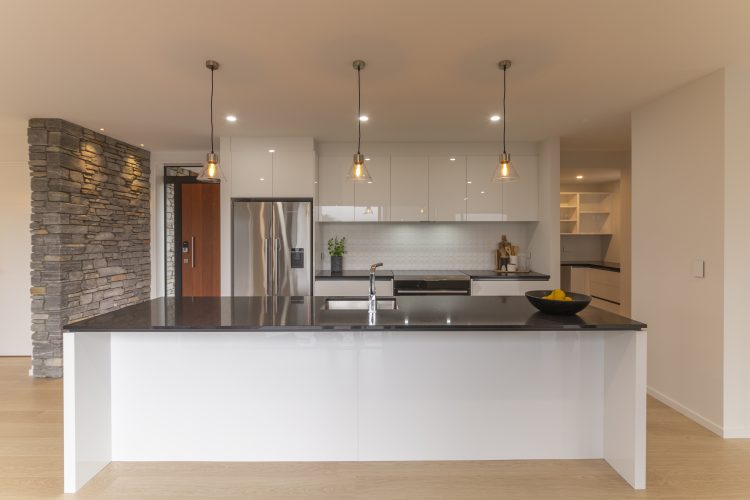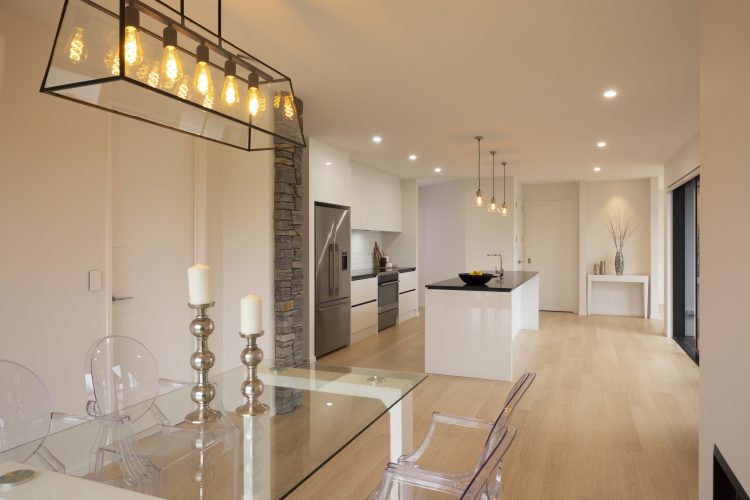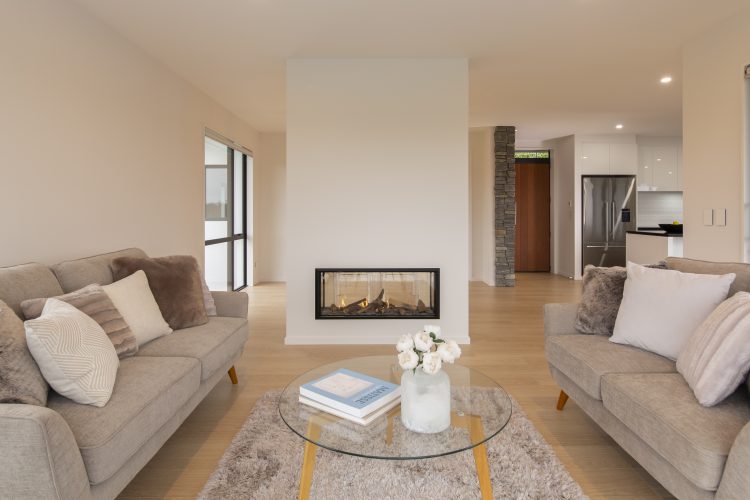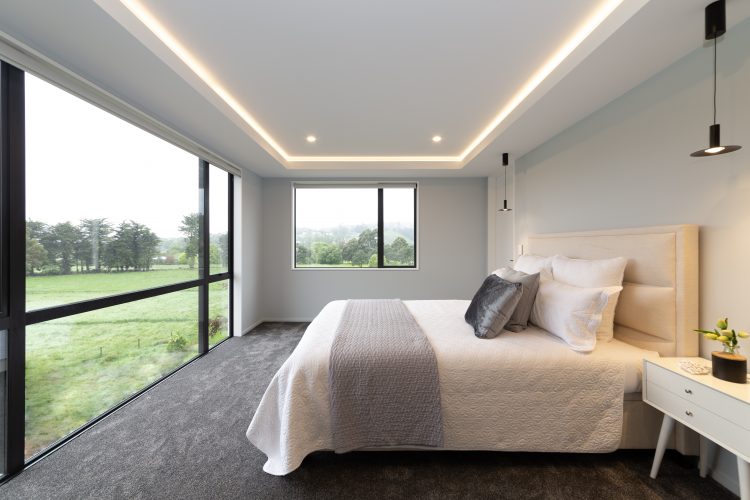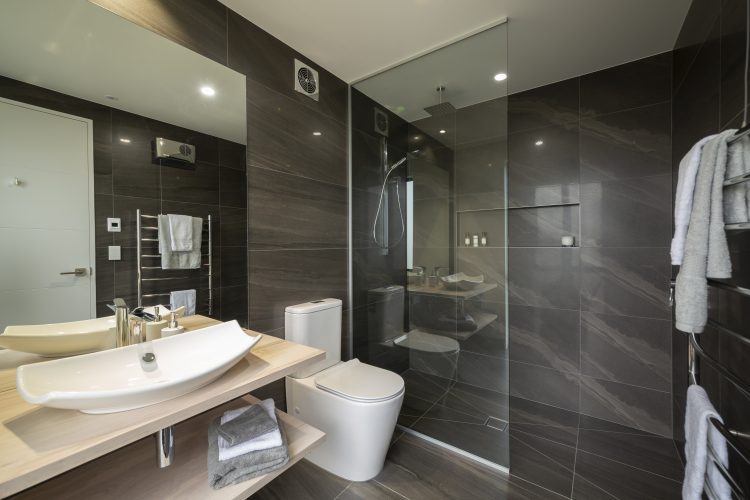THE HOUSE OF SECRETS
The clean, minimalist white plaster exterior of this two-storey hillside home hides what lies beneath and inside its walls. This is a house of secrets.
Building a house on the hills always presents challenges. Many sites are steep, some have restricted access and others have unstable ground. This project had all three challenges and unseasonal groundwater run-off to further complicate the build.
Despite the worse than expected geotechnical conditions Richard Fantham of Radius Building says he was never worried by what lay ahead.
I’m always excited by the challenge of building on the hills”, says Richard. “Even with a comprehensive geotechnical report you don’t always know what you’ve got until you start.”
When Richard’s team started excavating this site they found the ground conditions were much worse than anticipated. Massive amounts of poor unstable soils were dug out and excavated until a firm base was reached. New soil of a specific density was brought in, mixed with lime and compacted to form a stable base for building, though with such a steep site the final design still resulted in 12 separate foundation levels for the one house.
Consequently the foundations were extremely complex, and consisted of wide footings on multiple levels and foundations resting on foundations. Retaining walls even required their own foundations. With multiple levels the pouring of concrete and construction had to be very carefully sequenced.
“These foundations were an extraordinary exercise in coordination to ensure each foundation was built in the right order to enable the next foundation to be constructed”, says Richard. “It reinforced the importance of strategic planning and building the structure on paper and in my mind prior to starting construction. You can’t just charge into it until a problem confronts you. By studying the plans and thinking before you build, you can identify the best sequence to ensure any potential issues don’t become real problems.”
With a two-storey house built in separate parts and supported on 12 levels, matching the heights and angles was essential to ensure a seamless, stepless transition from the garage to the main house on the upper level. A further complication was the need to include a seismic joint between the house and garage. One of this house’s many secrets, though the garage appears part of the house, it actually sits on its own reinforced concrete foundation separate from the two-storey wooden framed house. The seismic joint allows the house and garage sections to move independently in an earthquake, rather than tearing each other apart.
Despite being a sophisticated design the seismic joint was able to be constructed using standard building materials thanks to some additional research undertaken by Richard. This prevented the need to import extremely expensive off shore materials which reduced not only the build cost but also the build time.
“Managing groundwater and rainfall during the build to protect the excavations is critical”, says Richard. “We had to cover about 75% of the site every night to keep rain from eroding the earthworks. There’s zero margin for error with watertightness because if you allow water to get in the cost of repairs would be prohibitive. With rainwater travelling down the hillside it has to be carefully controlled and directed before, during and after construction. Hidden between the retaining walls and house walls are cavities to ensure even if rainwater somehow got in it would be carried safely away.”
With hidden rainwater cavities, seismic joints and foundations on 12 levels this truly is a house with secrets. The smart, white plastered exterior gives little hint of what lies beneath, and that’s a measure of the success of the build.
“There’s huge satisfaction from completing a complex build such as this, on an unstable site, at the end of a cul-de-sac with difficult access and no off-site parking”, says Richard. “Looking at the finished result I’m incredibly proud of what’s been achieved and willing to share this house’s many secrets.”

